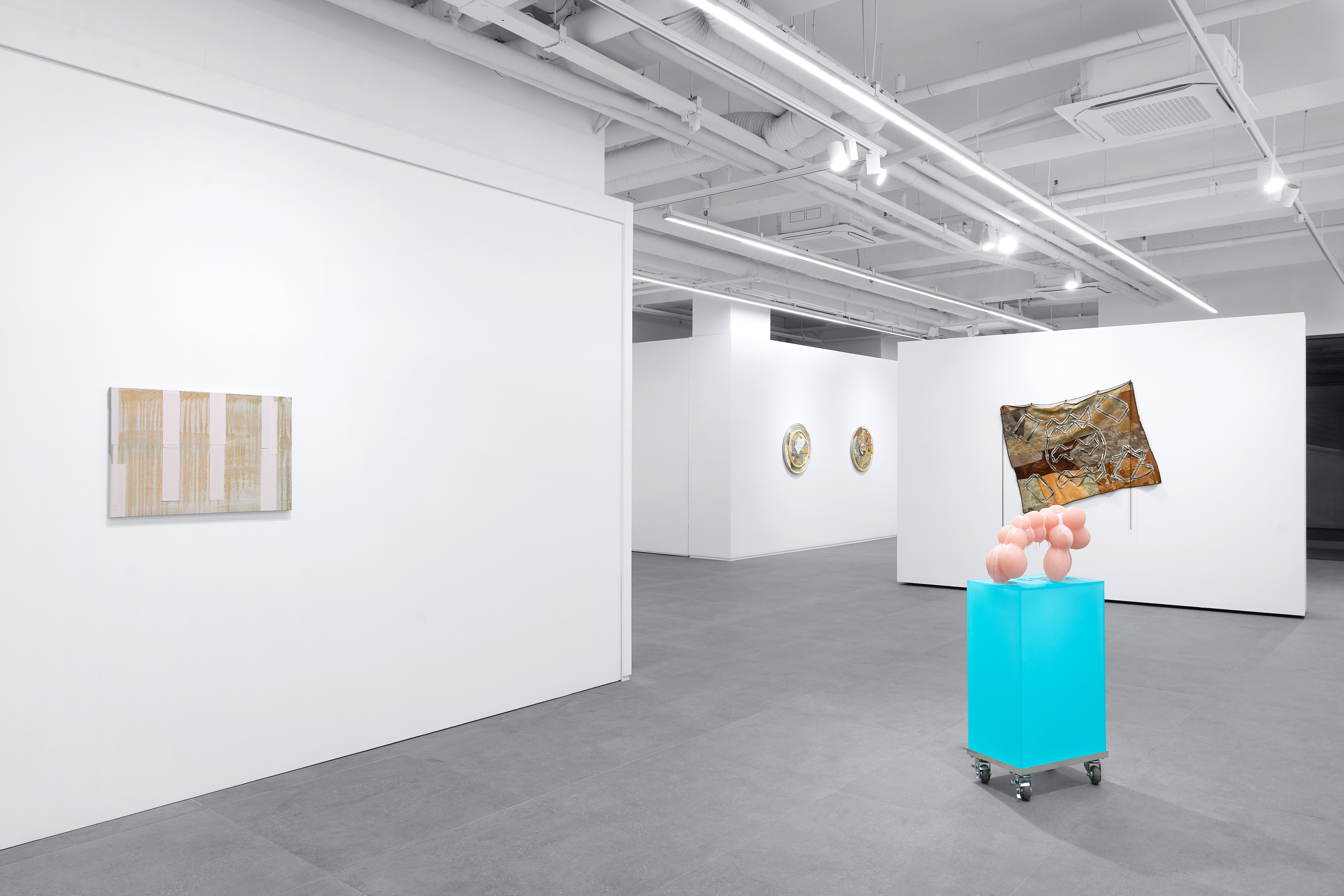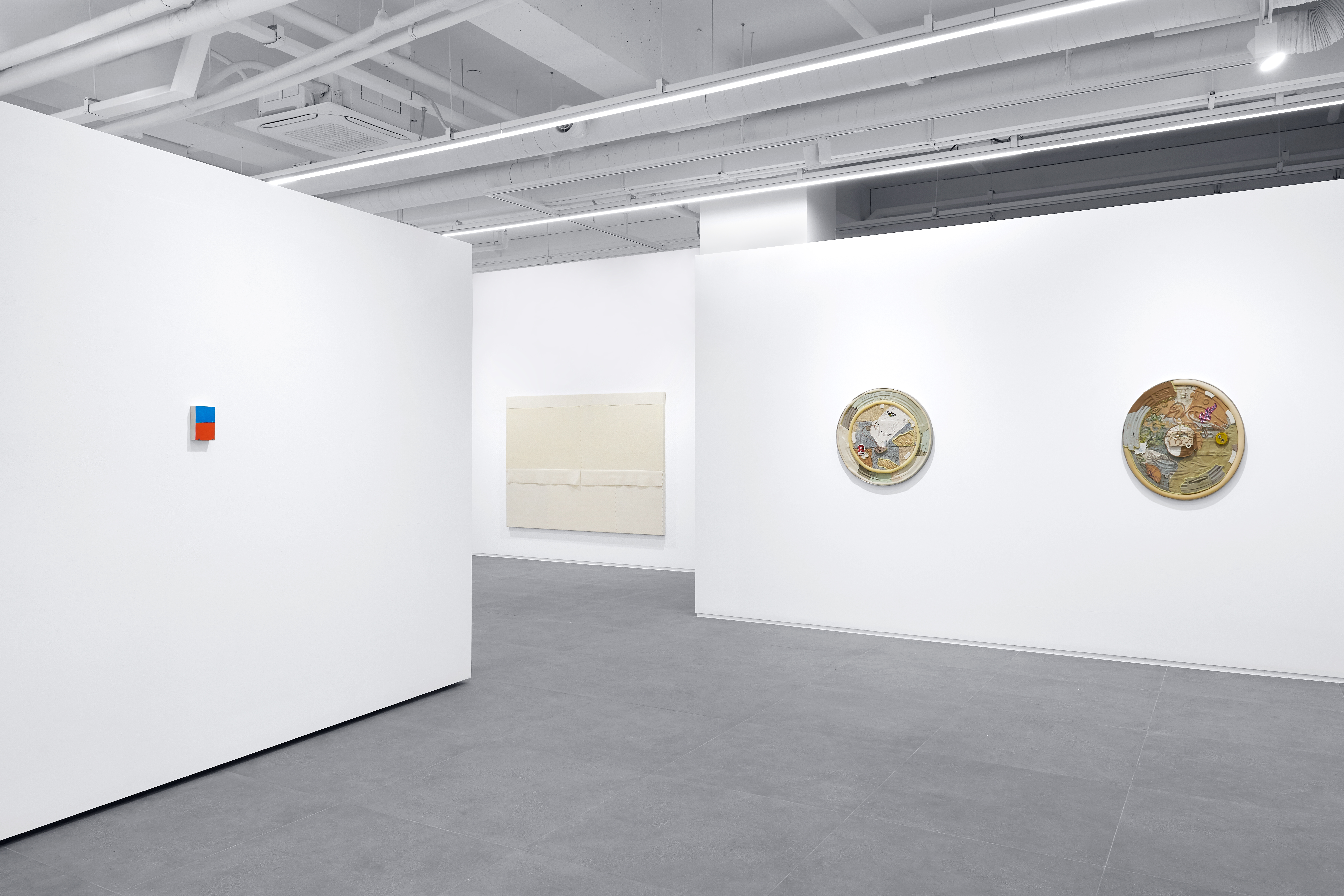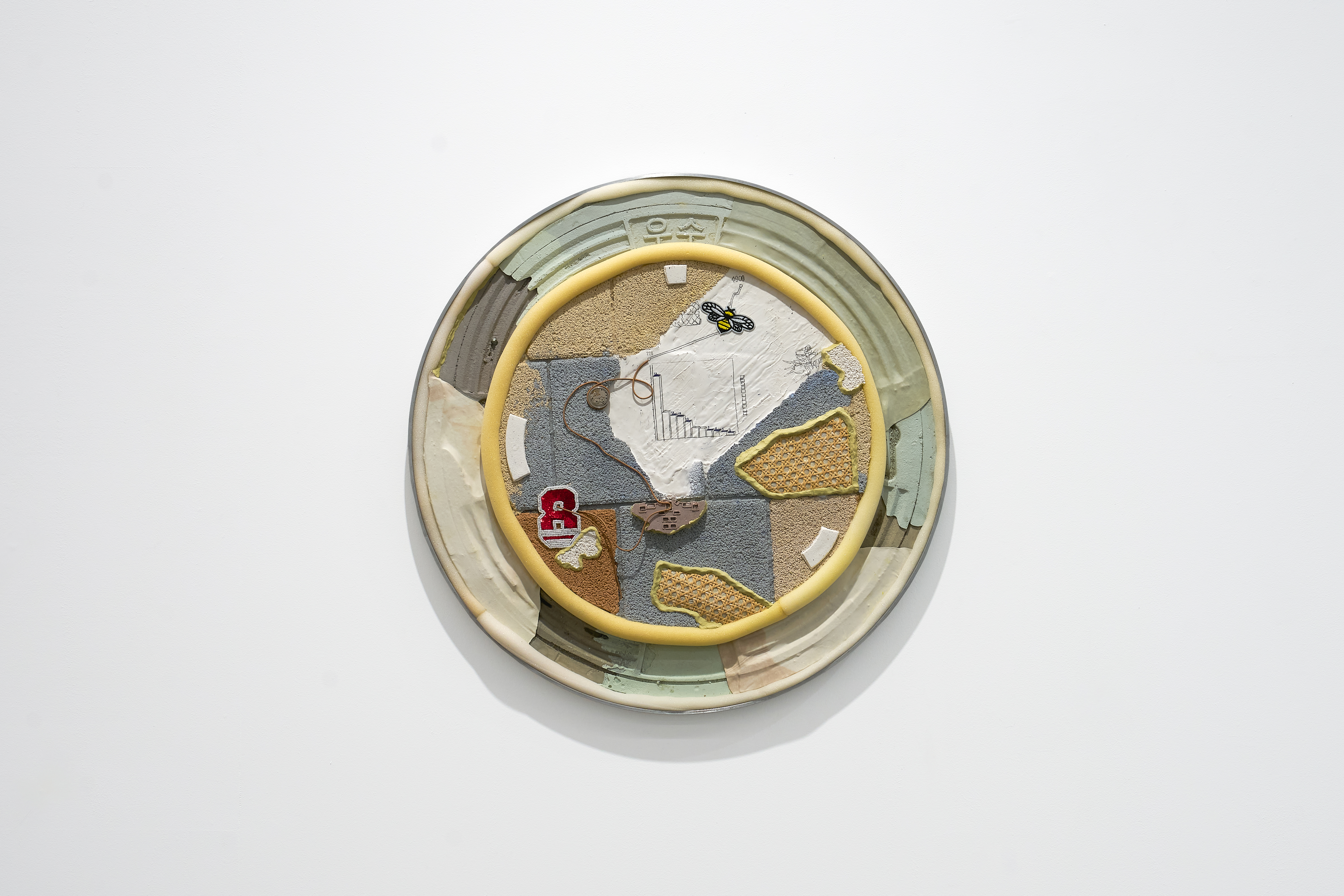After Hours
Installation view of “After Hours” at ONE AND J. Gallery, 2024.




Manhole Cover from B to D (2024)
Jesmonite, leather cord, leather, foam cord, woven rattan, watch movement, embroidery patch, brushed aluminium, ink, epoxy clay
72 x 72 x 3 cm
Jesmonite, leather cord, leather, foam cord, woven rattan, watch movement, embroidery patch, brushed aluminium, ink, epoxy clay
72 x 72 x 3 cm

Manhole Cover from P to L (2024)
Jesmonite, leather cord, leather, foam cord, woven rattan, vintage watch,
watch movement, wax, shoe material, embroidery patch, brushed aluminium,
epoxy clay, grass-flock
72 x 72 x 3 cm
Jesmonite, leather cord, leather, foam cord, woven rattan, vintage watch,
watch movement, wax, shoe material, embroidery patch, brushed aluminium,
epoxy clay, grass-flock
72 x 72 x 3 cm

Tie-dyed flag is either regional or international (2021)
Tie-dyed leather, chain, zipper, waxcoated yarn, beeswax
131 x 94 cm
Tie-dyed leather, chain, zipper, waxcoated yarn, beeswax
131 x 94 cm

Photographs: ARTIFACTS 아티팩츠
The exhibition After Hours (2024) grew out of a question regarding how we experience contemporary art. The entire process of art enjoyment—from the creation of the artwork by the artist to its appreciation by gallery visitors—involves a variety of sensations and emotions experienced by all involved parties. This exhibition, in particular, focuses on the feeling of “improvisation” as a means of further exploring the experience of contemporary art. In this context, improvisation does not refer to an individual making a spectacle that expresses their own desires; rather, improvisation refers to the externalization of an individual, ever-changing affect expressed within the structures and conditions of the surrounding society.
The progression of art history reveals that as the new generation applies a critical perspective to dominate art trends, new art movements emerge in the wake of the old. Within each new period, art develops and evolves in a state of tension with existing conventions and structures. In recent years, it has been difficult to sense any significant break with prevailing trends. Within the history of art, there have been many attempts at creating something entirely new, and therefore, in the current moment, approaches that claim to be “new” can feel like copies of what ha already come before; it is also possible that amidst the current climate of diversity and fast-paced changes of contemporary society, it is difficult for any new innovation to feel as though it can have a meaningful impact on the status quo. Of course, when we look back at the art of today from a vantage point hundreds of years in the future, we may find that, in fact, it was a period of meaningful change and transition. This exhibition, however, turns its attention away from this focus on “newness” and instead considers “improvisation,” whic is one of the many dominant characteristics of contemporary art operating at the moment. Improvisation can be understood as a “vibration” that continually responds to changes in the present moment while also serving as a motive force that drives the creativity of the artist.
The improvisational gestures that spring from each artist’s unique approach to the creative process naturally differentiate artworks from one another, creating a distance both from meta-discourses and the monumentality of the artwork. The exhibition After Hours was conceived and designed from a similar perspective. We hope that this exhibition captures the improvisational attitudes of each artist amidst the dominant trend favoring the familiar trait of “contemporaneousness” within the present-day world of contemporary art.
The progression of art history reveals that as the new generation applies a critical perspective to dominate art trends, new art movements emerge in the wake of the old. Within each new period, art develops and evolves in a state of tension with existing conventions and structures. In recent years, it has been difficult to sense any significant break with prevailing trends. Within the history of art, there have been many attempts at creating something entirely new, and therefore, in the current moment, approaches that claim to be “new” can feel like copies of what ha already come before; it is also possible that amidst the current climate of diversity and fast-paced changes of contemporary society, it is difficult for any new innovation to feel as though it can have a meaningful impact on the status quo. Of course, when we look back at the art of today from a vantage point hundreds of years in the future, we may find that, in fact, it was a period of meaningful change and transition. This exhibition, however, turns its attention away from this focus on “newness” and instead considers “improvisation,” whic is one of the many dominant characteristics of contemporary art operating at the moment. Improvisation can be understood as a “vibration” that continually responds to changes in the present moment while also serving as a motive force that drives the creativity of the artist.
The improvisational gestures that spring from each artist’s unique approach to the creative process naturally differentiate artworks from one another, creating a distance both from meta-discourses and the monumentality of the artwork. The exhibition After Hours was conceived and designed from a similar perspective. We hope that this exhibition captures the improvisational attitudes of each artist amidst the dominant trend favoring the familiar trait of “contemporaneousness” within the present-day world of contemporary art.
Hansol Kim uses clothes commonly worn in everyday life to explore and reconfigure the signs and other phenomena that can be discovered within social, economic, and historical changes. The work Hansol Kim displays at this exhibition utilizes camouflage patterns meant to disguise, adopting an approach that involves varying the shape, color, and pattern of each piece according to the environment. The works Tie-dyed flag is either regional or international (2021)—a flag that deconstructs the symbolic authority of the medieval aristocratic family and takes on a new meanings yet decorative quality—as well as Manhole Cover from P to L(2024) and Manhole Cover from B to D (2024)—which are castings of manhole covers adorned with symbols representative of the regional identities of various cities—address two issues that Hansol Kim has long been interested in: regionality and universality. The round shape of the manhole cover and the collage of elements with which it is adorned are reminiscent of a clock; the work acts as a metaphor reflecting a temporality whereby universal phenomena, such as fashion trends, are appeared and manifested differently according to time and place.